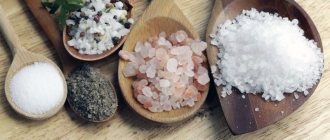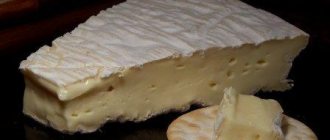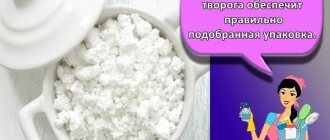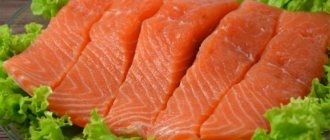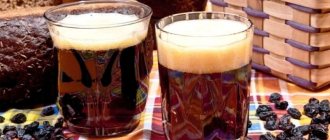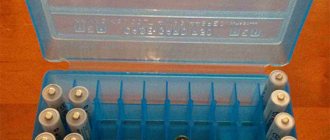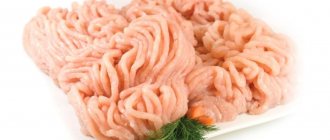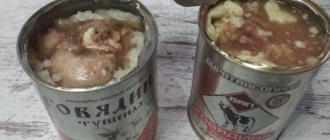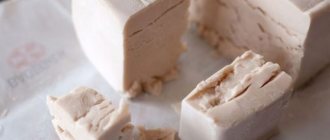What is "nitrite salt"
This is the name of a food additive that consists of 99.4 percent table salt (NaCl) and 0.6 percent sodium nitrite.
Anti-caking agents can also be introduced in small quantities (hundredths of a percent). Everything is clear with table salt. The most interesting thing here is sodium nitrite - it is the sodium salt of nitrous acid (NaN02). In chemical language they say: sodium nitrate. This crystalline substance has a yellowish-white color. It dissolves well in water. Sodium nitrite is poisonous in large doses (up to 10-15 mg per kilogram of meat is allowed), therefore, in order to avoid accidental poisoning, in the European Union it is allowed to be used exclusively as part of complex additives or as part of complex curing mixtures. That is, they decided to make it very salty by combining it with the lion's share of table salt.
In the post-Soviet space, this thing has also taken root. Practitioners say that since 2013, all Russian enterprises have been “prescribed” to use nitrite salt instead of pure sodium nitrite, since this is a truly safe method of adding the additive.
The meat processing industry is based in its work on GOST 32781-2014 (Food additives. Sodium nitrite E250. Technical conditions). This standard is interstate, it has been adopted in several states: Armenia Ministry of Economy of the Republic of Armenia, Belarus Gosstandart of the Republic of Belarus, Kyrgyzstan Kyrgyestandart, Russia Rosstandart, Tajikistan Tajikstandart, Ukraine Ministry of Economic Development of Ukraine.
What is the danger of an overdose of sodium nitrite?
As already mentioned, at a certain concentration of sodium nitrite, often irreversible processes occur in the human body. In case of an overdose, poisoning with a chemical substance occurs.
Symptoms of intoxication:
- dizziness;
- feverish condition;
- suffocation;
- convulsive phenomena;
- changes in the chemical composition of the blood;
- heart rhythm disturbance;
- attacks of nausea.
If such symptoms appear, you should immediately seek qualified medical help. If the cause of intoxication is not eliminated in a timely manner, death may occur.
Important! When consuming sausage products with added nitrite salt, there is no need to fear such serious consequences. All food products are produced in accordance with state standards and undergo mandatory testing. Sausage and similar products contain a negligible amount of sodium nitrite, which is absolutely safe for human health.
Is there any benefit?
If you immediately decide to carefully study the label on sausage or frankfurters, do not be surprised that the composition does not contain nitrite salt. This chemical ingredient exists, and it is disguised as the E250 food additive.
What are the benefits of sodium nitrite and is there any? It is extremely difficult to talk about the beneficial properties of a chemical substance for the human body, since many scientists call it absolutely useless, and in some cases, deadly.
But for sausage producers, sodium nitrite is simply an irreplaceable additive.
The only beneficial property of the supplement is its destructive effect on parasites and pathogenic microorganisms. During the production of sausage, various pathogens may remain in the meat ingredients. It is the nitrite salt that kills them. Therefore, consuming foods with added nitrite salt protects a person from botulism.
If you correctly calculate the proportions of adding sodium nitrate, you cannot harm yourself. Some housewives even choose this seasoning for preparing homemade sausages or ham. But if you are still a supporter of proper nutrition, then try to exclude such an additive from your diet.
Let us emphasize once again that nitrite salt is useful exclusively as a food additive in meat products. If you incorrectly calculate the required dosage and abuse this seasoning, serious health problems may arise.
On a note! Several decades ago, saltpeter was used as a food additive. The modern food industry has found an alternative to it in the form of nitrite salt.
Types of production
Nitrite salt in the form of a dry substance is used during production:
- boiled and stuffed sausages, sausages, sausages, as well as meat loaves and other products;
- semi-smoked, stuffed, boiled-smoked sausages, small sausages, frankfurters, as well as ham, meat loaves and other similar products;
- raw smoked sausages.
If according to the recipe some of the nitrite salt is missing, then it is replenished with ordinary table salt.
It should also be noted that in the production of smoked meats and ham products from beef or pork, this ingredient is used in the preparation of a special brine, which is subsequently used for extrusion of products in the quantity indicated in the technological map.
So how is said brine made? During the preparation of such a marinade, the following order is maintained: phosphates are dissolved in ordinary water, and then nitrite salt, granulated sugar (if necessary) and ascorbic acid are added there.
How to use nitrite salt
Nitrite salt is used in several ways: • In dry form for salting whole muscle pieces.
• For salting minced sausage. • Creation of brine for extrusion of meat. In any case, depending on the type of product, it is recommended to use from 10 to 20 grams of nitrite salt per kilogram of raw materials. In summer, the total amount of salt can be increased to 3 percent by adding nitrite or regular table salt. When making dry-cured products, I mix NS with spices (and other ingredients), then add the mixture to the minced meat or rub it on whole muscle pieces. Then I keep the product in the refrigerator for several days, and only then hang it in a permanent place to ripen. If I have “starter cultures” in my recipe, then for their development the product is kept at room temperature for some time (24-36 hours), preferably warm. You can read more about all this on the Emsausage forum or in my review
Properties of nitrite salt
Cooking homemade ham or other sausages is not complete without this component. Dishes retain their rich color and piquant taste even after long-term storage. This is one of the main advantages of such an additive, which is appreciated by modern chefs. However, the benefits of this “spice” do not end there; other benefits are presented below:
- the meat acquires a rich pink color, rather than the pale tint of stale products;
- the chemical compound successfully fights bacteria, extends the period of freshness of meat products;
- due to the invisible destruction of pathogenic flora, the risk of developing botulism is significantly reduced;
- the nitrite mixture prevents lipid oxidation processes, so fat will not spoil the taste of food industry products;
- sodium nitrate changes the composition of fibers, making meat and sausage products more tender in perception;
- the color of meat and meat taste improves, which is especially important for preparing sausage in batches from the manufacturer;
- moderate addition of food additives does not harm health; on the contrary, it provides effective prevention of pathogenic flora.
Factors affecting shelf life
The shelf life directly depends on the environment and the place where the product is stored. Let's consider what can reduce the external and taste parameters of nitrate salt:
- A vessel in which salt is stored . If it is not sealed, then there is an increased risk of unnecessary moisture, dust, and other substances getting into the product. Also, the packaging material may react with sodium nitrite, which will also adversely affect shelf life.
- Incorrect storage temperature . At temperatures below room temperature, the product loses its preservative properties.
- Storage . If the location of sodium nitrite is chosen incorrectly, environmental factors (such as humidity, sunlight, proximity to bulk products) can negatively affect the salt.
Briefly about contraindications
Specialized doctors and scientists unanimously assert that it is absolutely forbidden to use nitrite salt in its pure form as a seasoning for various dishes. Remember that sodium nitrite is exclusively a food additive that is used in the manufacturing process of various types of sausage products.
But, unfortunately, not everyone can consume nitrite salt even in negligible quantities.
List of contraindications:
- excess body weight;
- renal failure;
- tendency to swelling.
And gastroenterologists say that eating sausage for diseases of the digestive tract is contraindicated. Therefore, the above list cannot be called exhaustive.
Why should people who are prone to edema avoid using nitrite salt? Even in microscopic quantities, sodium nitrite enhances the effects of ordinary table salt on the human body. And as you know, this mineral is the cause of fluid retention in the body. With the disease, the clinical picture can worsen sharply.
It is not recommended to consume foods containing sodium nitrite for people with high blood pressure. The chemical helps to increase these indicators.
In the process of preparing homemade sausage, many housewives pursue the same goal - to create a natural and healthy product, so it is better to avoid adding nitrite salt. There is no equivalent alternative to such a food additive, but you can use various seasonings, spices, sea salt or table salt. Be healthy!
Benefits of use
As a rule, such products, manufactured by various companies, meet all the technical and hygienic requirements of regulatory authorities. All types of salt produced for the meat industry, having different concentrations of nitrites, are certified. Moreover, each stage of production of this spice is subjected to careful and scrupulous testing.
The main advantages of this product are:
- Increasing the shelf life of meat products.
- Pleasant and rich color of the finished product.
- Slowing down reproduction, as well as completely stopping the development of harmful bacteria (for example, clostridia).
- Facilitated handling of basic raw materials, as well as the salting procedure.
It should also be noted that such a product ensures the sanitary and hygienic safety of meat-containing products and their high taste.
